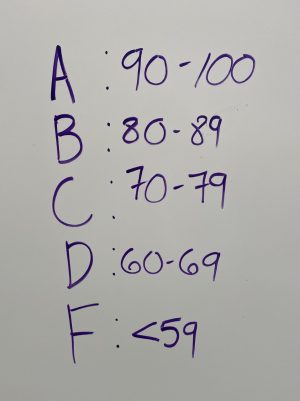Change in the Air: Track and Field
Measurement changes for a sport steeped in tradition
William Marquardt, with Permission
John B. Reilly Field
December 20, 2017
The long standing, traditional high school sport of track and field may become more complex this year. The Florida High School Athletic Association has become the first state in the United States to use a metric measuring system for 100% of district, regional, and state track and field championships, including all track, running, and field events like the high jump, the triple jump and the long jump. Traditionally, these events have been measured and the results have been recorded using the standard measurement of feet and inches.
This year’s 2017-18 US high school track and field season may be interesting on the national level, now that there will be different teams and leagues using different measurements to record some field events that have been the last to adapt to the widely accepted metric system that is used to measure running events like the sprinting event and the 400 meter dash.
While it has become accepted tradition for U.S. high school athletics to use the metric system for measurement of track events in running distances, Massachusetts, like most of America, still measures field events like the long jump and the triple jump in feet and inches. At Abington High School track and field events during the season, you will hear the track and field officials shouting out and recording the athlete’s results using feet and inches.
According to the Association of Track and Field Statisticians (ATFS), prior to the 1979 season, the US High School Federation officially adopted the metric system for measurements in the sport of track and field, though in actuality the full transition to using metric has been very slow. Measuring and reporting field events in New England, like the triple jump and the long jump, are still widely reported using feet and inches because this area is known for keeping with tradition.
Reports are that Massachusetts currently has no official changes planned. Athletic Director Mr. Peter Serino said that AHS will continue “…to align ourselves with other schools and organizations in the area so that our student athletes can compete on a broader level than just within Abington.”
Although the country as a whole has been slow to fully adapt to the metric conversion for all track and field events, there is one state that has adapted. Florida has led the way in the US by standardizing that the metric system form of measurements, as it is used in The Olympics, must be used to measure and record all high school track and field meets at the Florida state level, with no exceptions.
Though reports are that all track and field measurements from state level meets are to be reported only using the metric system by the 2018 season, the distances of the horizontal and vertical jumps are still measured using the standardized measurements of feet and inches. These results may be converted to metric for electronic reporting, but only when necessary.
As to when the change to metric measurements may occur for AHS Track and Field, AD Serino stated, “We are a member of the MIAA (Massachusetts Interscholastic Athletic Association), and any such change would come from the MIAA.” New England states might all need to make adjustments in the near future if their competitive states are asking for conversions to measurements in metric only.
Mr. Brian Lanner, the Head Coach for Abington High School’s Track and Field Team said “the need may arise after certain track and field events to record the results on-line.” He said that there are times he must “stop and take the measurement recorded during a high school meet field event, like the long jump, and convert the numbers mathematically to be recorded on-line in the metric form.” He said that “at times when reporting official track and field meet results I have to calculate the results to the nearest metric value for reporting reasons.”
Currently, Coach Lanner reports he “does not know of any plans for change in the measurement during the all track and field events from standard measurements to 100% metric.” But, he “hopes if surrounding high school track and field teams in Massachusetts make these changes, that the changes are uniform requirements across the state.”
As Coach Lanner describes it, “Here at AHS, it would be important that field events are all measured and recorded using the same measurement system to make it more accurate and simpler to compare results.” He added that “While Florida may have been first to make the change 100% to metric, it’s not impossible to see a time soon where all of New England may need to adjust to be more uniform across country.” He said “soon the entire country may have to measure and record 100% of the track and field results using the metric system only. National High School Track And Field officials in the U.S. may soon rule out any use of feet and inches as a form of measuring any event results.”
He also said, “Some track and field enthusiasts understand and accept the need to be more standardized and therefore they may accept the change to 100% metric for all measurements, for all track and field events, with no exceptions. Or, there is always the chance that New England states like Massachusetts could stick to traditions and continue to measure and shout out horizontal track and field jump results using the traditional standard measurements of feet and inches.”
In a sport that is steeped in tradition, some people have strong feelings about any change.











John Barghout • Jan 3, 2018 at 7:53 PM
I am a relative of Aleena Magnasco’s and competed in high school and college in the long jump and triple jump along with the 100M and 200M, during the cross-over from Yards to Meters in the 1970’s. I found it odd back then that races were in Metric distances but Measurements in Field Events like the Long Jump were in feet/inches. I needed to keep the 7.32 Meter PB of mine in the back of my head as I watch the Olympics on TV – crazy! I fully support a global standard in T&F both in running distances and measurement. Must be the Engineer in me! I’m proud to know that Aleena and her brother Leo are enjoying their T&F events and wish them the very best as well. Best Wishes, Uncle John Barghout